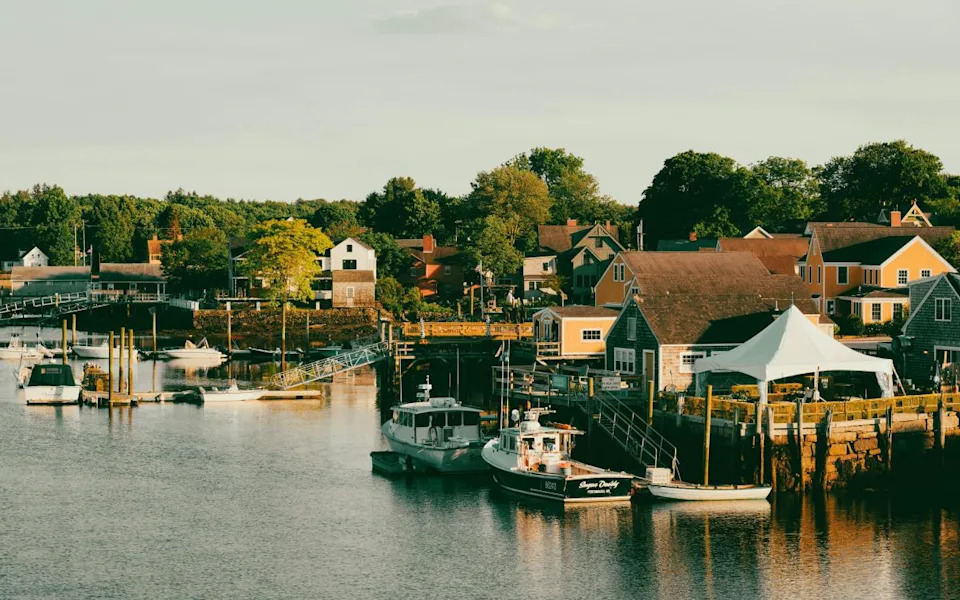
Japan is known for many things: ancient shrines, snow-capped mountains, the neon glare of its vibrant cities. But lazy days spent idling on white-sand beaches is an image we tend to reserve for countries to the south-east of the Asian continent. Japan does, however, have Okinawa Prefecture, a scattered string of 160 subtropical islands noted for their photogenic sandbars and scarcely believable turquoise waters.
The prefecture is often remembered outside of Japan as the site of the Battle of Okinawa, one of the last engagements of the Second World War, and for its subsequent hosting of multiple US military bases. But Okinawa has also become a popular tourist destination with a distinct cultural identity and lengthy history.
It wasn’t until the 19th century, in fact, that Japan established rule on the islands; previously Okinawa was known as the Ryukyu Kingdom and operated as an independent nation. The Ryukyuan people still make up the majority of the population, and their culture is evident across the region, from the shisa guardian lion statues outside almost every front door to awamori, the beloved local liquor.
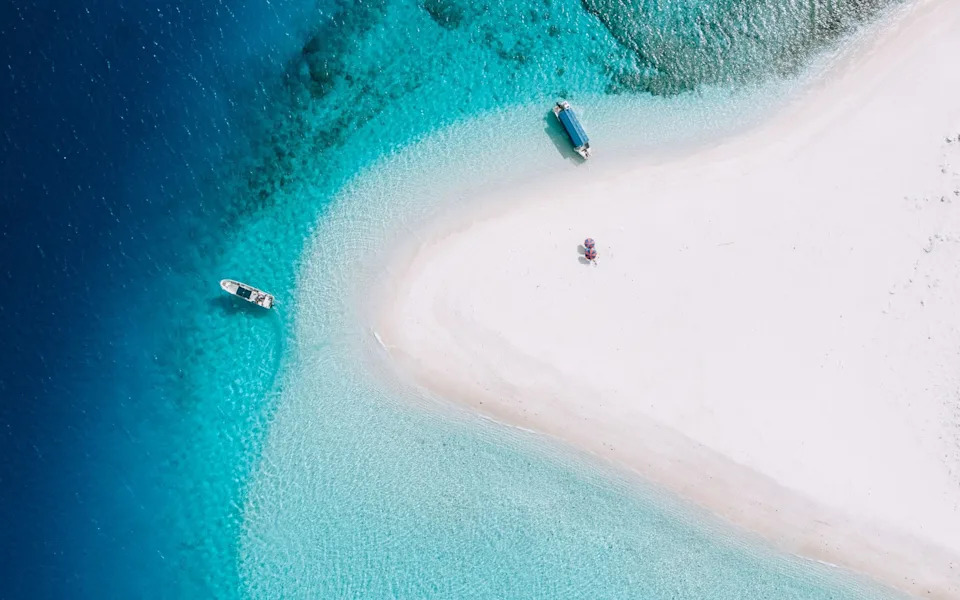 Okinawa Prefecture is made up of 160 subtropical islands - Ippei & Janine Photography
Okinawa Prefecture is made up of 160 subtropical islands - Ippei & Janine PhotographyThat said, Okinawa’s tourism industry has not often made the most of Ryukyuan culture. The islands are littered with an abundance of golf courses, and there’s even a mock American village complete with a themed shopping mall – possibly to cater to those stationed on military bases missing home.
AdvertisementAdvertisement#«R16e4kr8lb2m7nfddbH1» iframe AdvertisementAdvertisement#«R26e4kr8lb2m7nfddbH1» iframeA destination boom in the 1970s (when the Japanese re-established control of Okinawa following a post-war period under US administration) saw many large resorts being built, and hotel expansion well into the 2010s typically followed a format of anonymous, concrete-block mega-hotels that today feel incongruous with their naturally rich surroundings.
Admittedly this kind of construction was in part to withstand seasonal typhoons and salt winds, and there are some architecturally ambitious, good hotels – Hoshinoya Taketomi Island, for example – but they are the exception, not the rule.
This tourism landscape is what makes Rosewood Hotels & Resorts’ Japanese debut so intriguing. Forgoing the typical entry path into Japan for an international hotel chain – a large Tokyo flagship – the group has chosen sleepy Miyakojima, Okinawa’s fourth-largest island, as the setting for its new property.
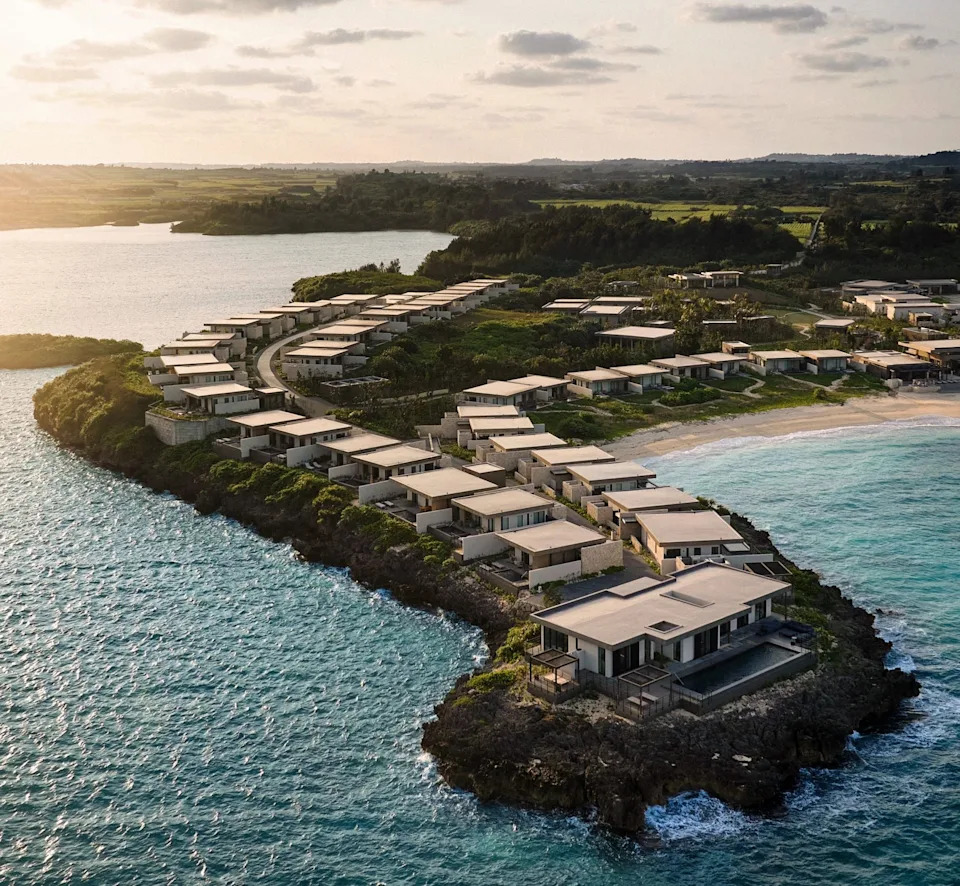 Rosewood Miyakojima sits overlooking Oura Bay - Jonathan Leijonhufvud
Rosewood Miyakojima sits overlooking Oura Bay - Jonathan LeijonhufvudThe location is fantastic – guests drive through miles of sugarcane fields to find themselves on a promontory that looks out to one side over serene Oura Bay, and to the other a picturesque inlet mostly backed by thick vegetation. The result is, especially for those staying at the tip of the peninsula, a feeling of being almost completely surrounded by Miyakojima’s vivid turquoise waters.
AdvertisementAdvertisement#«R1ce4kr8lb2m7nfddbH1» iframe AdvertisementAdvertisement#«R2ce4kr8lb2m7nfddbH1» iframeIf you look on Google Maps you may notice that just across the inlet, to the left of the hotel, a shrine is marked. Click on it and you will see not an ornate temple but a tiny, unadorned beach tucked into the thicket. This is an example of what locals call utaki, an Okinawan term for sacred places used for the veneration of gods and ancestors. There are thousands of utaki across the Okinawan islands; they can take the form of anything from a cave or grove to a mountain or even a tree.
A reverence for nature and respect for the land is characteristic among Miyakojima’s inhabitants and, understandably given over-development elsewhere, they were suspicious of Rosewood’s arrival in the area, especially given the proximity to spiritually important places. With this in mind, before any construction started, the hotel worked with a noro, priestesses of the Ryukyuan spirituality, who blessed the site through traditional rituals.
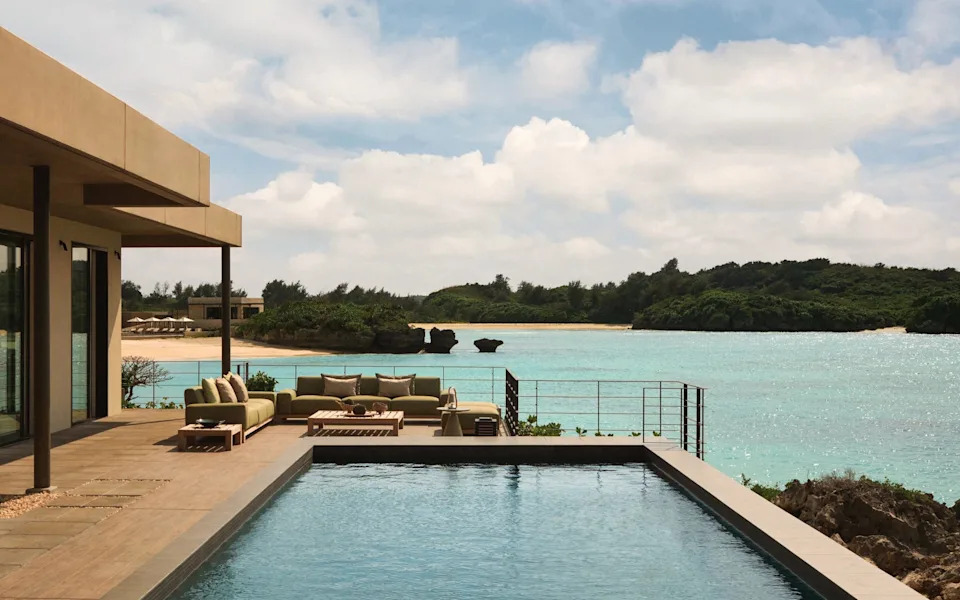 The hotel feels almost surrounded by the crystalline waters of Miyakojima - Jonathan Leijonhufvud
The hotel feels almost surrounded by the crystalline waters of Miyakojima - Jonathan LeijonhufvudArchitect Piet Boon’s blueprint saw 55 villas set across the site, fronted with local Miyako stone and connected via pathways surrounded by fledgling foliage. Single-storey buildings keep the hotel’s profile as low as possible. A lot of vegetation was cut during construction, but the intention is that with time it will grow back and envelop the buildings, allowing the hotel to retreat into its natural setting.
Inside, the villas are elegant sanctuaries decorated with swaths of wood, leather and stone in a soft, neutral palette. Luxuries abound, of course, with soaking tubs and Dyson hair dryers, bowls overflowing with tropical fruit and private terraces featuring pools and sunloungers.
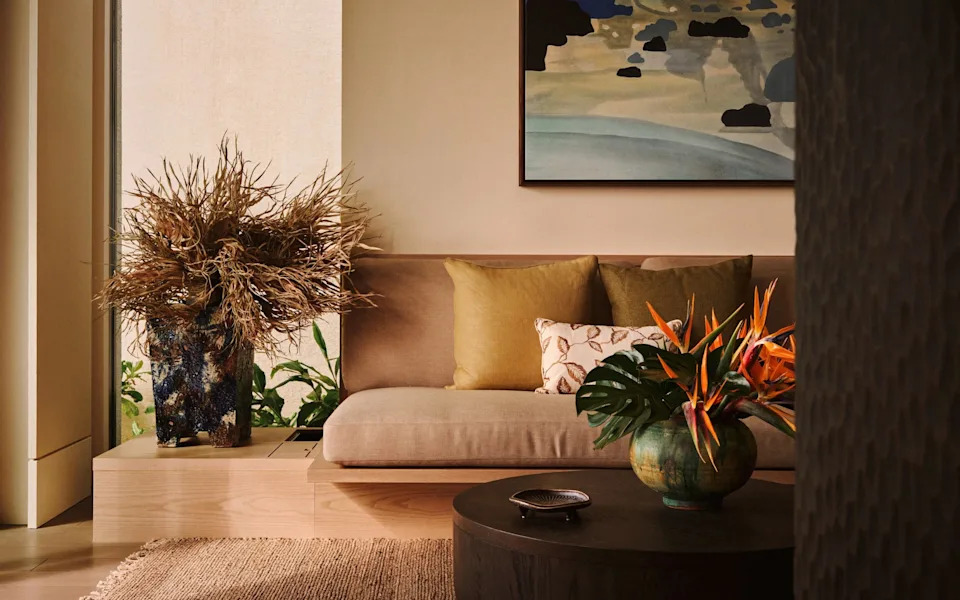 A soft, neutral palette prevails inside Rosewood’s villas - Jonathan Leijonhufvud
A soft, neutral palette prevails inside Rosewood’s villas - Jonathan LeijonhufvudDay-to-day life at the hotel also takes many of its cues from Ryukyuan culture. Outside every villa is a pair of fearsome shisa statues, a kind of hybrid lion-dog that always comes in pairs – the male’s mouth open in a roar to scare off evil spirits, the female’s mouth closed to keep in the good ones.
AdvertisementAdvertisement#«R1ke4kr8lb2m7nfddbH1» iframe AdvertisementAdvertisement#«R2ke4kr8lb2m7nfddbH1» iframeGuests can spend their days discovering ancient spear-fishing techniques from a local fisherman, visit the highly esteemed, family-run Kinjo Tougei pottery studio to make their own shisa (workshops are only offered to Rosewood guests), take day trips to discover the island’s utaki, or venture out on a boat to snorkel with sea turtles over coral reef. In the Asaya spa, regional inspirations might include a footbath with Miyako herbs or a mud mask inspired by the local Paantu festival, where villagers dress as frightening supernatural beings to discourage wicked spectres.
No trip to Japan is complete without some serious gastronomy, but guests at Rosewood Miyakojima might be somewhat surprised by the offering. Okinawan cuisine represents a departure from familiar Japanese fare – rice, for example, isn’t typically included, as it was not a locally grown product on the islands.
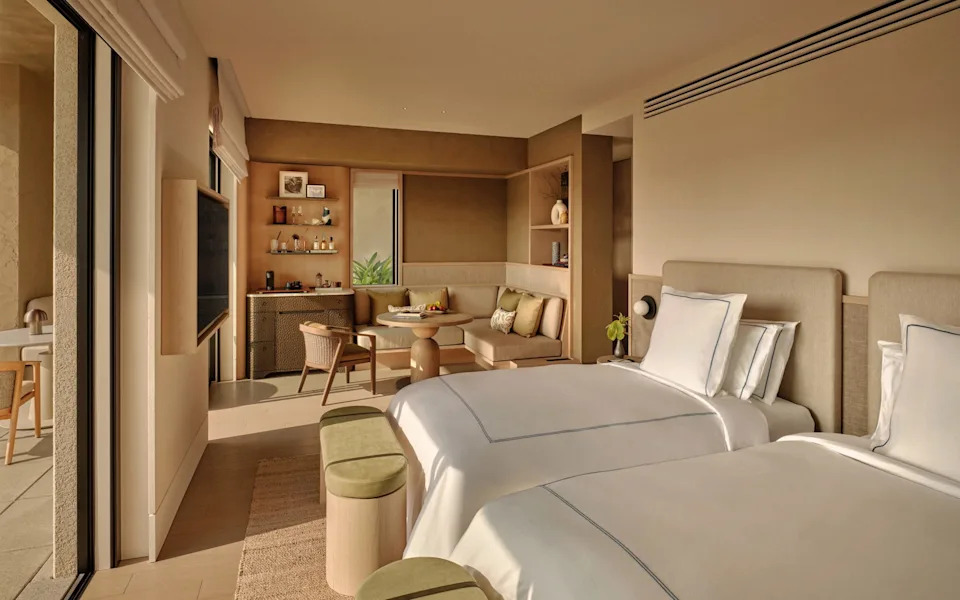 Rooms are decorated with wood, leather and stone - Jonathan Leijonhufvud
Rooms are decorated with wood, leather and stone - Jonathan LeijonhufvudBut you won’t go hungry for seafood. Maas restaurant, from its perch on a little hill, makes excellent use of the bounteous local catch – much of it sourced by the aforementioned spear fisherman. The enormous king crab, served cold with a miso dip, was genuinely sensational. Elsewhere, main restaurant Nagi serves expertly prepared Italian dishes that pair well with the sunny setting. A final restaurant, Choma, will open later this year and provide a more standard Japanese menu in a setting right on the sand.
So what did the locals think in the end? They were invited into the property on opening week and apparently, though still warming up, were pleasantly surprised by the path Rosewood has chosen. Partnerships with Miyakojima’s community – the Kinjo Tougei pottery workshops, the spear fisherman, an initiative to help conserve the island’s sea turtle population – are all examples of a more spirited and sustainable approach to tourism on the islands.
AdvertisementAdvertisement#«R1qe4kr8lb2m7nfddbH1» iframe AdvertisementAdvertisement#«R2qe4kr8lb2m7nfddbH1» iframeWith time, and the further bedding in of the site’s vegetation, hopefully the hotel will become an example of how to do an Okinawan resort well – and with any luck become a reference point for future development on these beautiful sunshine islands.
Patrick Hamilton Courtney travelled as a guest of Rosewood Miyakojima, which offers doubles from £828, B&B.
Broaden your horizons with award-winning British journalism. Try The Telegraph free for 1 month with unlimited access to our award-winning website, exclusive app, money-saving offers and more.












